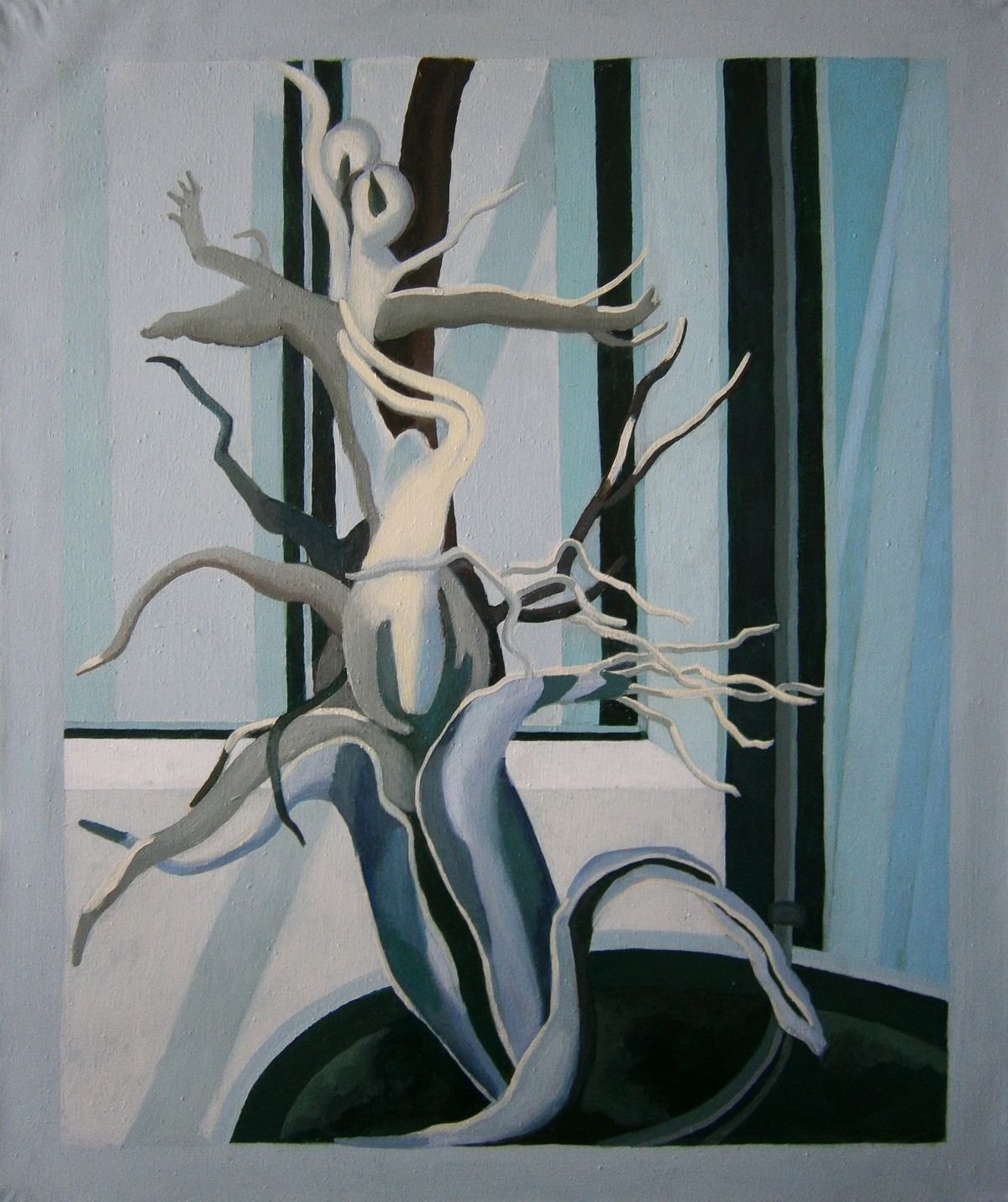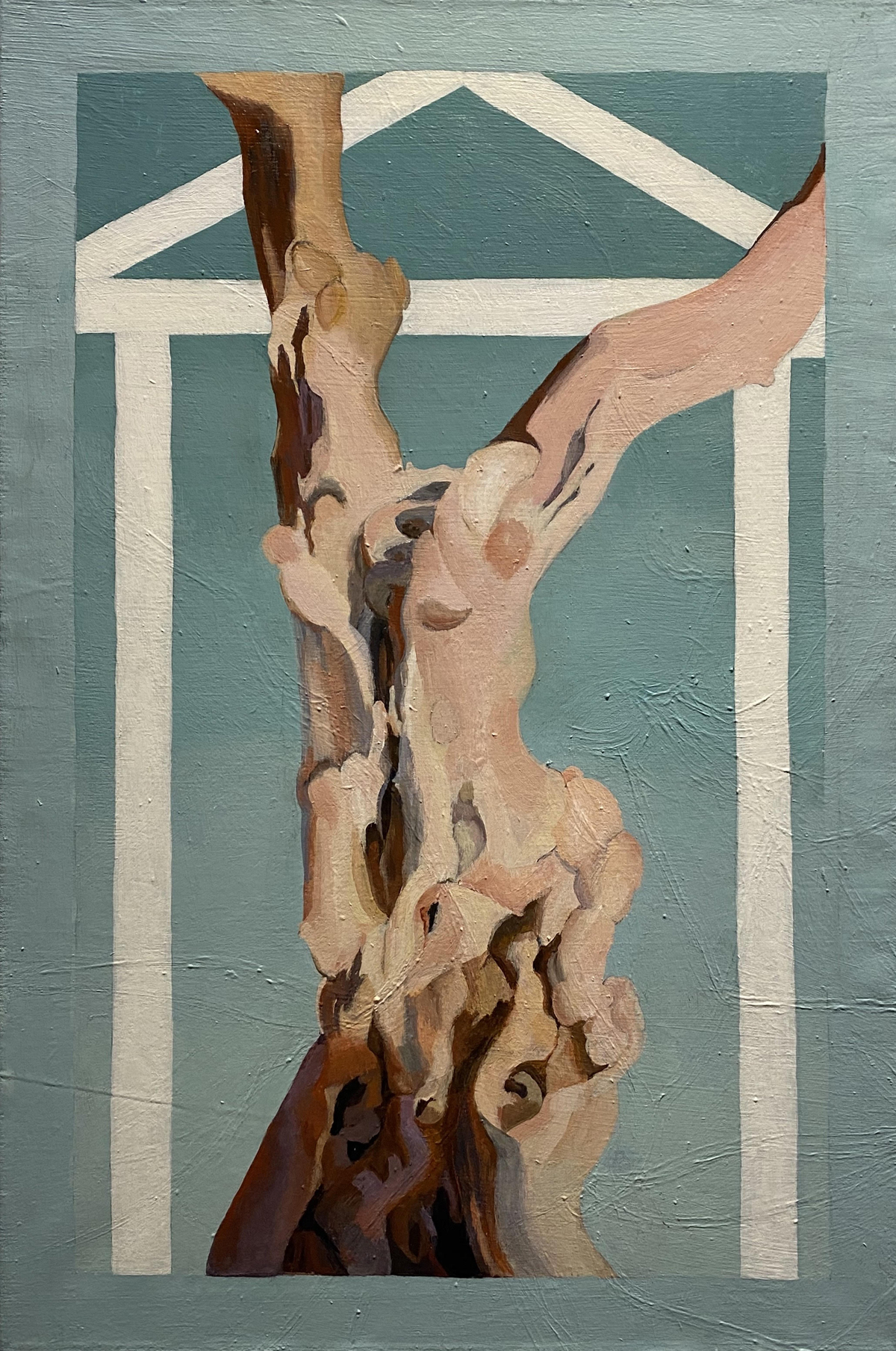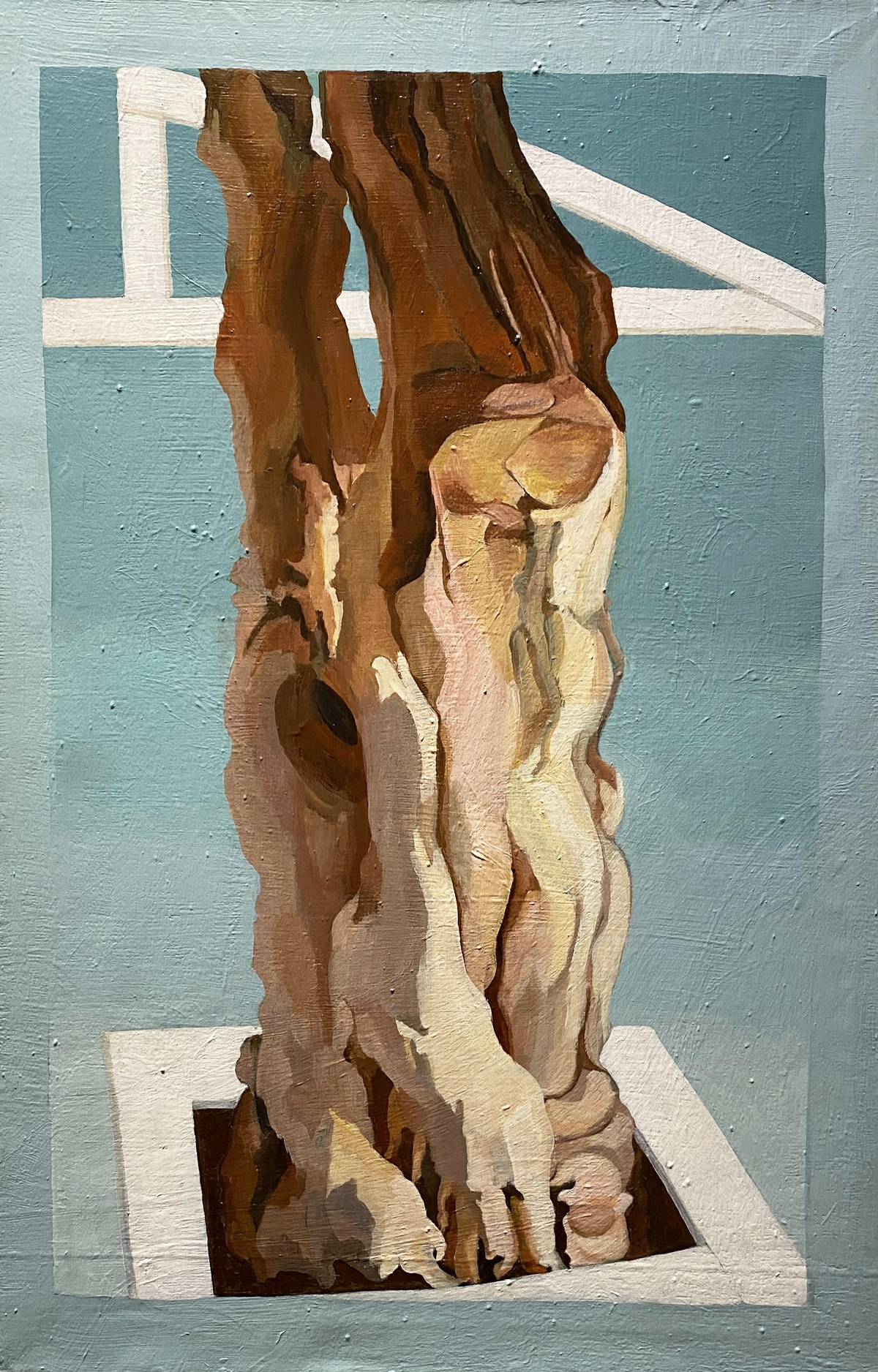
Mary Hrbacek - Human Nature: Pefka and Sycamore
Elga Wimmer PCC, NY
Mary Hrbacek's art makes us see trees with fresh eyes.
Her new paintings, drawings, and painted drawings on display at Elga Wimmer PCC till February 1, 2020 are not just beautiful. They so create an affinity between ourselves and the world of trees that we know right away that a web links us with all living things in the world.
Taking walks in Manhattan's Riverside Park as well as traveling in Greece, Italy, Russia and China, Hrbacek was wonderstruck by the seeming anthropomorphism of many trees. Similarities between tree shapes and human limbs gave rise to hybrid forms in her imagination that in turn inspired her to see trees and the world of nature with a new wonder. She thought of Ovid's stories of metamorphosis, which, together with his Fasti, have given us most of our Greek and Roman mythological tales and inspired much of Western art and literature. She thought of Daphne becoming a laurel tree in Bernini's statue Apollo and Daphne as well as Antonio Pollaiuolo and Giovanni Battista's paintings of the same episode -- the paintings bookending Bernini’s magnificent sculpture over a period ranging from the late fifteenth century to the mid-eighteenth century. All three are masterpieces but still rooted in their times. All three celebrate the beauty of the laurel tree and the beauty of Apollo and Daphne's delightfully human bodies -- or rather their human-like divine bodies. But the two domains remain separate. Hrbacek's work, on the other hand, fuses them into a single biological reality. The insight driving this unification permeates "Burgeoning," "Enclosed Torso," and "Enmeshed Tree."

The transmutation of natural forms links Hrbacek's imagery with much of the work of Georgia O'Keefe, perhaps the greatest American woman artist of the twentieth century. In terms of art’s ramifications for the environment, O'Keefe was an artist ahead of her time. She felt a great affinity with the New Mexico's Pedernal Mountain in the shadow of which she lived for many years. She perceived an organic connection between trees and animals (see her "Deer's Skull with Pedernal"), but perhaps given the times she lived in, she did not extend that linkage to humans. It is Hrbacek who has built the missing bridge. (To be sure, O’Keefe did make the connection between human physiognomy and features of flowers, but that topic has been treated elsewhere.)
We might think also of the great twentieth-century storyteller and fantasist J.R.R. Tolkien's novel The Lord of the Rings, in which he depicts marvelous biological entities called the Ents. The Ents are trees that are very similar to humans -- they can do almost everything humans can do. Long before climate change and other looming environmental disasters became existential challenges, Tolkien tried so to remove from our eyes the "drab blur of triteness or familiarity" that we could see trees anew. May I suggest that Hrbacek achieves the same effect?
Hrbacek's artistic process starts with her taking photographs of trees that give her ideas of transmutation and metamorphosis. She then makes charcoal drawings and, these days, also painted drawings entailing the application of acrylic paint on canvas in addition to charcoal. Both drawings and painted drawings may inspire paintings or remain as free-standing works of art. Examples of all three genres are on display in the Elga Wimmer show. The charcoal drawings (see "Twisted Naxos") are especially evocative, for they create an immense suggestiveness, similar to that of Robert Motherwell's "Elegies to the Spanish Republic." You might also think of Georges Seurat's enigmatic drawings.

Suggestiveness or reverberation or resonance are centrally important in all the world's artistic traditions. In his book "Art Without Borders: A Philosophical Exploration of Art and Humanity," Ben-Ami Scharfstein of Tel Aviv University reminds us that, in the sixteenth century, Chinese philosopher Wang Yang-ming wrote that a person has fellow feelings with all living things -- birds, beasts, and plants -- and even with such things as tiles and stones. By virtue of her travels in China, Hrbacek has been exposed to such thinking, and she responds to it through her art.
Hrbacek has created an art of reconciliation with nature. At a time when nature is seriously endangered, she pushes us to reimagine that reconciliation. Her art is an ecological force. - Siba Kumar Das
Mr. Das is a former United Nations official who writes about art. He served the U.N. Development Program in New York and several developing countries. He now lives in the U.S., splitting his time between New York City and upstate New York. He has published articles on artists living in the Upper Delaware Valley, and is presently focusing on art more globally. Recent articles have appeared in dArt International, Arte Fuse, and Artdaily.com.

I have been following Mary Hrbacek's career for many years and this is one of the best reviews ever written about her work. And that includes a few that I have penned. Just Saying! Fast Eddy Rubin, NYC-based writer, curator, artist.